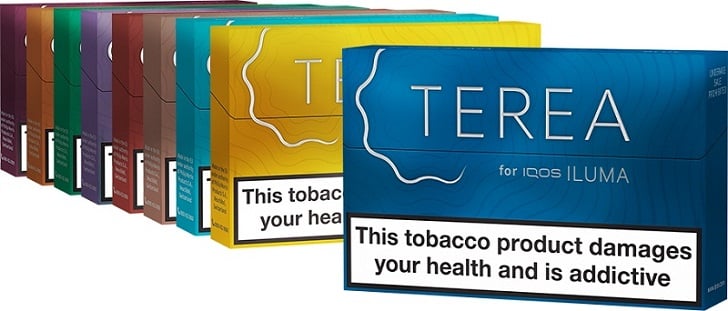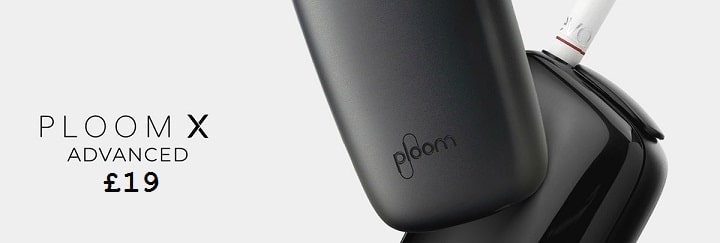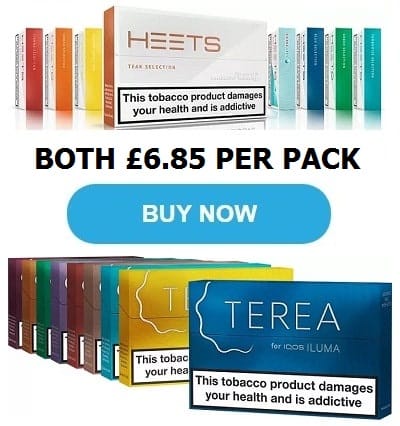
So here we are again – it’s Christmas, and hopefully some of you found a nice new iQOS under the tree along with all the other shiny stuff. Anyway, it’s been a pretty good year for Heat not Burn, with the technology steadily becoming more mainstream and widely accepted. We’re still in the early stages of the fight for public acceptance, and that’s something every user can play a part in – basically, show the people around you that you can vape your HnB device responsibly without causing a nuisance – but HnB is gaining popularity among smokers. It’s pretty clear by now that it’s a viable replacement for cigarettes, and it should be equally clear from the evidence that it’s also a whole lot healthier.
So what’s been happening? Well, manufacturers – mostly in China – have come out with a slew of new devices. These are all conceptually similar to iQOS, but some of them include new and interesting ideas. We’ve already seen the first temperature-controlled HnB mods, which let you tweak the Heat part of the equation to get exactly the taste you want. There’s an increasing range of device styles, from the iQOS with its slimline holder all the way up to biggish mods with battery capacity to match. Almost all of them are HEET-compatible too, so you can have a couple of different devices without having to worry about feeding them And then there’s the year’s big story:
iQOS gets FDA approval
The biggest news of the year was the successful end to Philip Morris’s long and expensive Pre-Market Tobacco Application to the FDA. This process has been a bureaucratic nightmare lasting over two years, but the outcome means iQOS and HEETs can finally be sold in the USA.
Under the USA’s Food, Drug and Cosmetic Act, any new tobacco product has to receive approval from the FDA before it can be legally sold. This isn’t a simple process. The PMTA has to include full details of all the ingredients of the product, and a description of how it’s processed and manufactured. It also has to have full reports on anything that’s known about any health risks of the product.
Worst of all for something like iQOS, the FDA are also looking for references to tobacco product standards and either an explanation of how the product meets those standards or a justification for why it doesn’t. That’s difficult when the product is the first of its kind, like iQOS – there aren’t any standards for it to meet.
To compensate, the FDA insisted on an obsessive amount of detail. The PMTA for iQOS was over two million pages long and cost several million dollars to prepare. It also took far longer to process than it was supposed to – by law the FDA has a year to reach a decision after accepting an application, and this one took nearly two and a half.
The application also only applies to the version it was submitted for – iQOS 2.4, which has been replaced twice since then. The good news is that the FDA is looking at ways to streamline the application process for upgrades to an existing product, so hopefully the iQOS 3 won’t just be going on sale in the USA when the rest of the world is on iQOS 5.
HEETs became the de facto standard
We’ve tested a bunch of new products this year, and had a lot of fun doing it. Most of the devices we reviewed were pretty good. One or two were great. One or two, sadly, were pretty awful. But they all had one thing in common – they use PMI’s HEETs.
Maybe that was inevitable. iQOS was the first HnB device to go mainstream, so PMI had a head start on setting up a distribution network for their tobacco sticks. In fact only a major global tobacco company could even think about selling a completely new product in enough shops and petrol stations around the world to make an HnB system a viable choice.
So, probably quite sensibly, most of the people making new HnB devices haven’t even bothered. There’s already a perfectly good design of stick, you can get it in most countries now, so why not just use that? And that’s what they’ve done. Do PMI mind? I really doubt it. They might lose a few iQOS sales, but I’d be surprised if they make much profit on those anyway. The real money is in HEETs, and just about everyone who buys an HnB device is going to become a regular customer for those.
Scrutiny of HnB mounts
It’s fair to say that the coalition of nanny statists, anti-nicotine freaks and killjoys who don’t like vaping aren’t huge fans of HnB either. Since the technology started to go mainstream a couple of years ago it’s come under ferocious attack from exactly the same people as have been persecuting vapers for the last decade, and they’ve been using most of the same arguments. The fact that HnB really is a product of the major tobacco companies is just gravy for these lunatics. It never occurs to them that the tobacco companies don’t actually want to kill their customers, and are very keen to sell safer products. Oh no. If it’s sold by a tobacco company it must be as dangerous as cigarettes, because it’s sold by a tobacco company. Yes, this argument is circular enough that you could sprinkle it with sugar and call it a doughnut, but when did logic matter to the lifestyle police?
Anyway, the hysteria from the cranks is as loud as ever, but medical journals are starting to pay more attention to HnB now. The journal Tobacco Control published an evidence review of HnB earlier this year, looking at 31 studies that had been done to that point. Expect more of this next year, complete with media attention that focuses relentlessly on anything that can be made to sound bad.So overall it’s been another interesting year. What comes now? Honestly, I don’t have a clue. No doubt I’ll be here next December to tell you all about it, though.









